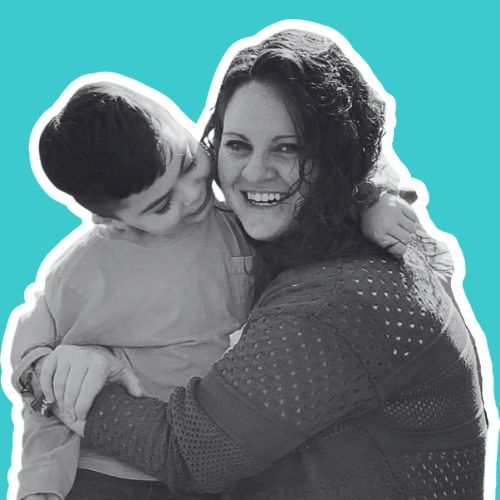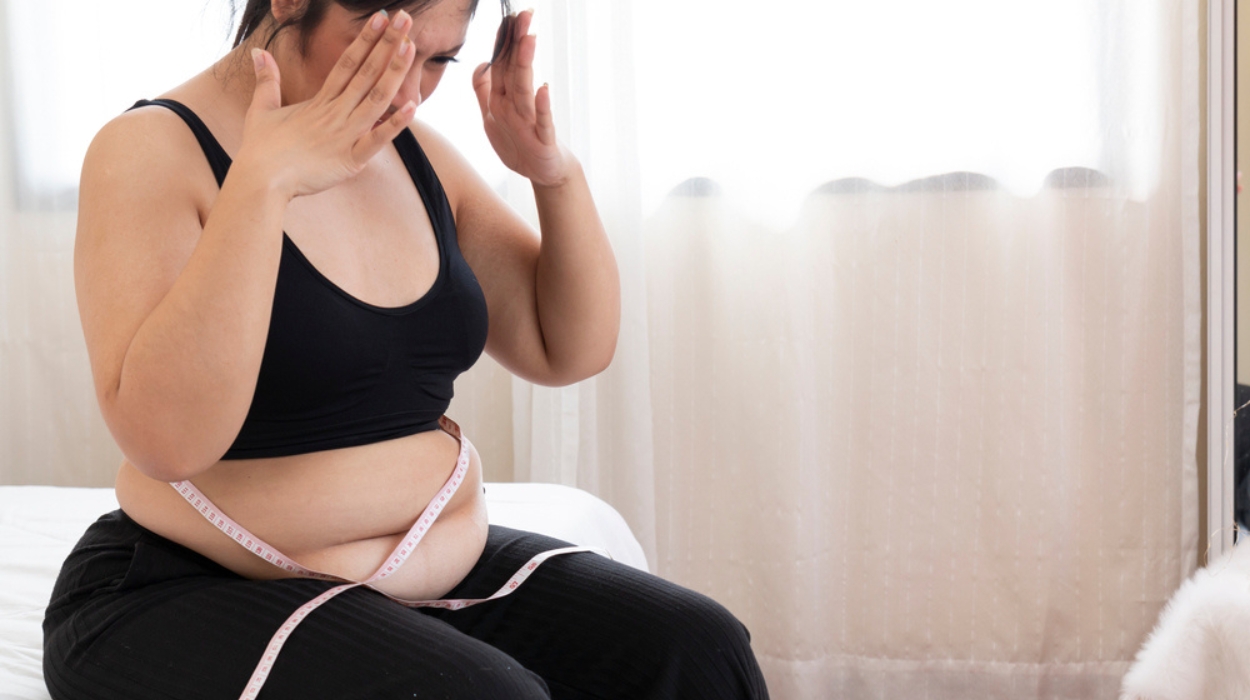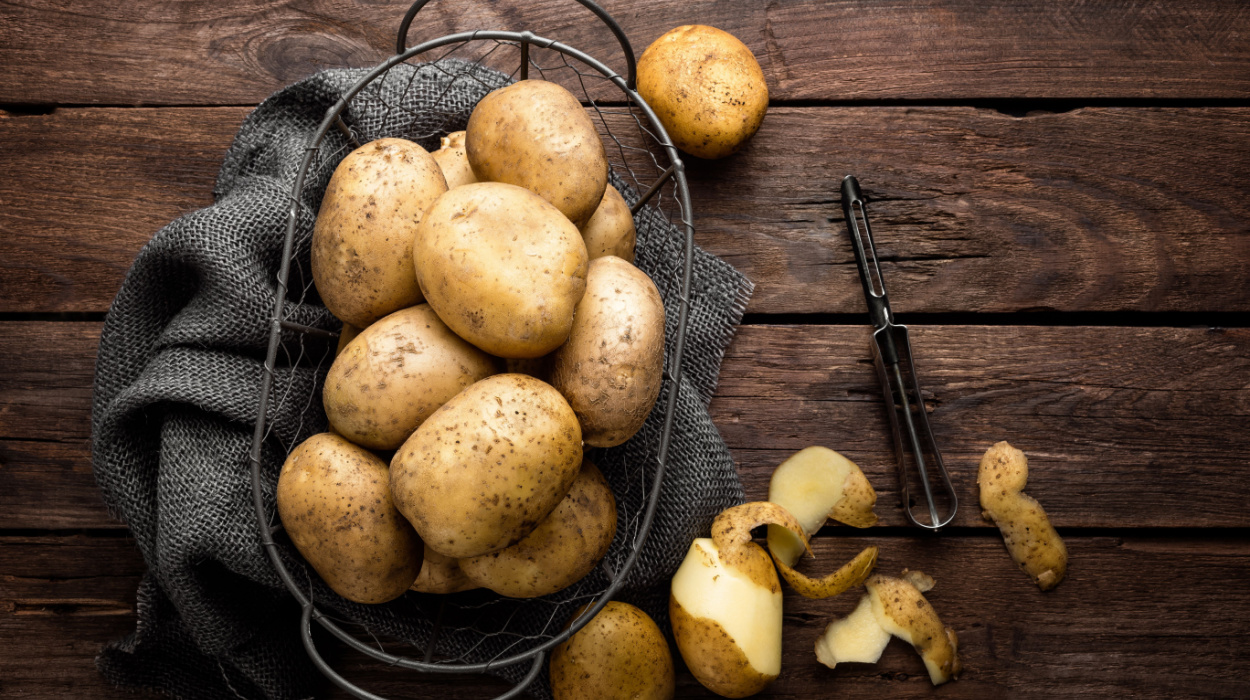How To Lose Belly Fat After 50: Here’s 10 Tips For People Over 50 To Try In 2024
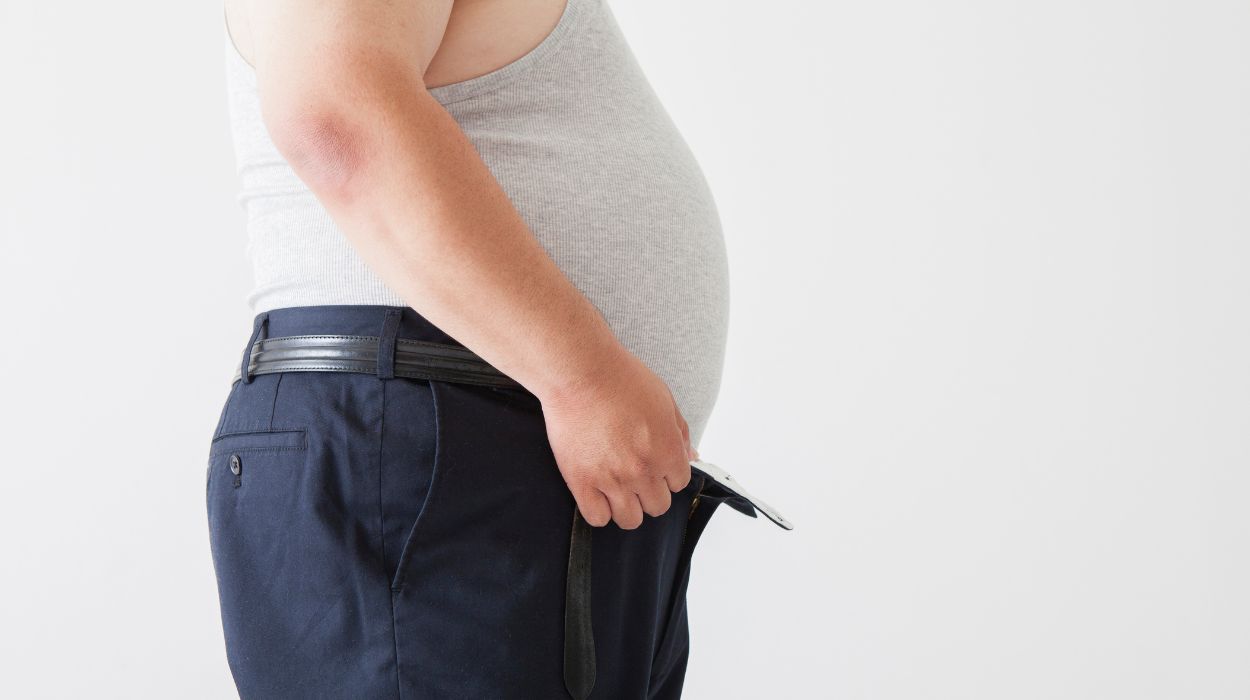
Losing weight over 50 can feel challenging, especially in stubborn areas like the abdomen. As we age, hormonal changes, slower metabolism, and lifestyle shifts can lead to added belly fat. But the golden years don’t need to be linked to weight gain.
Many people wonder how to lose belly fat after 50 effectively. You’ll also need to consider ways that meet age restrictions. Fortunately, reducing belly fat and enjoying a healthier version of yourself is possible with the right strategies.
Let’s dive into proven weight loss methods for those in their 50s and beyond!
10 Healthy Ways For People Over 50 To Reduce Belly Fat
Here are ten ways to reduce belly fat after 50:
- Cut down on sugar.
- Eat a plant-based diet.
- Bump up protein.
- Exercise and strength training.
- Stay hydrated.
- Lower your carbohydrate intake.
- Incorporate fiber-rich foods into your diet.
- Find healthy sleep strategies.
- Address stress levels.
- Keep portions in check.
10 Best Ways To Lose Belly Fat After 50
While there’s no one-size-fits-all solution for weight loss, specific methods have proven to be effective for those in the 50 and older age bracket. Let’s explore ten targeted strategies for losing belly fat after 50.
Featured Partner Offer
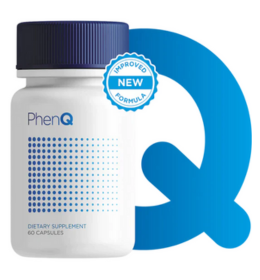
PhenQ
- Helps to burn fat
- Crushes food cravings
- Boosts energy and balances mood
- High-quality formula
Money Back Guarantee and Free US Shipping
Cut Down On Sugar

Age and metabolism are closely related. Many age-related changes to your body composition are linked to how the metabolism slows[1] and the rate at which you break down food. This makes it even more crucial to be mindful of your dietary choices.
One of the best ways to lose belly fat after 50 is to reduce your sugar intake drastically. Excessive sugar consumption can lead to fat accumulation, particularly around the midsection.
The primary culprit of abdominal fat is fructose. Commonly found in sweetened drinks and processed foods, it’s dangerous because it is linked to visceral fat accumulation. Fructose[2] consumption leads to decreased insulin and diminished suppression of ghrelin[3] secretion. These hormones are crucial in regulating energy homeostasis, food intake, appetite, and energy expenditure.
Instead of reaching for an easy-to-grab sugary snack or drink, focus on natural sugar sources. Natural sweeteners like stevia or honey and whole fruits can be an excellent option to satisfy your sweet tooth.
You should also keep a close eye on hidden sugars. Many products labeled low-fat or diet are misleading. These sugars can add up and increase your risk of chronic diseases like type 2 diabetes.[4] Minimizing your sugar intake can help you shed belly fat, maintain a healthy body weight, and reduce your risk of dangerous health conditions.
Eat A Plant-Based Diet
Embracing a plant-based diet can be a game-changer when losing weight after 50. As the digestive system slows down with age,[5] it is essential to consume foods rich in nutrients that are easy to break down.
Plant-based diets emphasize fruits, vegetables, whole grains, and other non-processed foods. Studies show[5] that individuals consuming plant-based diets tend to have lower body mass index than those who don’t. Plant-based diets are considered a viable option for individuals interested in losing weight and improving dietary quality.
Dietary fiber in plant-based foods promotes satiety, which prevents overeating and aids in weight management. Most plants are also naturally low in calories and fat. This helps limit a diet rich in unhealthy fats, contributing to belly fat.
Plant-based diets[6] also provide essential antioxidants and anti-inflammatory benefits. Replacing saturated fats from meat with healthy fats from plants offers a more balanced diet that supports weight loss. You’ll also notice improved digestion and higher energy levels.
If you’re feeling overwhelmed with the idea of switching to a plant-based diet, consider making minor changes to start. Swap meat-based meals with plant-based alternatives a few times a week.
Bump Up Protein
Muscle mass naturally decreases[7] as we age. One of the most effective ways to combat this change is to ensure you have adequate protein intake. Protein is crucial in preserving lean muscle mass and promoting healthy muscle growth. A pilot study[8] of middle-aged and older women with obesity showed improvements in muscle strength and muscle tissue preservation for those with a low-calorie, high-protein diet.
Incorporating a diet rich in high-quality lean protein sources can significantly improve[9] weight loss by boosting metabolism and reducing hunger. This is because protein requires more energy to digest compared to fats and carbohydrates. Foods like legumes, tofu, seeds, and lentils are excellent protein sources.
Protein also has the added benefit of promoting satiety, making you feel full longer. This helps curb unnecessary snacking or overeating, leading to a caloric surplus and belly fat accumulation. Although a protein-rich diet is important at any age, including protein-rich foods in every meal after age 50 becomes even more vital.
Remember, balance is still key. Ensure you are getting a mix of nutrients from various food groups. Consult a registered dietitian or doctor to determine the proper protein intake for your needs.
Exercise And Strength Training
Physical activity is a cornerstone of health at any age, especially as you enter your 50s. Since losing weight is a primary concern for many in their 50s, integrating regular aerobic exercise and strength training is essential.
Cardiovascular workouts, such as brisk walking, jogging, or cycling, boost metabolism and burn calories. High-intensity interval training is also an effective way to lose weight, particularly visceral fat.[10]
While cardio exercises shed fats, introducing strength training is the true game-changer. As muscle mass decreases with age, this adds to a slower metabolic rate. Strength and resistance training helps combat muscle loss and keep the metabolism active. Incorporating exercises like weight lifting, resistance band routines, and body-weight exercises can help build muscle and enhance bone density.
Moreover, muscles are metabolically active tissues. The more muscle mass you have, the more calories are burned, even at rest. This means even when you’re not actively working out, your body is still burning fat when you regularly engage in physical activity.[11] So, for anyone over 50 aiming to trim the waistline, a balanced cardio and strength training routine is the way to go.
Stay Hydrated
Hydration plays a pivotal role in overall health, especially regarding weight loss. The body’s ability to retain water diminishes with age, making it even more essential to consume adequate fluids. Staying well-hydrated boosts metabolism[12] and helps burn calories. Drinking water before meals also helps reduce calorie intake, improving weight management efforts.
Water also helps with food digestion[12] and the elimination of toxins, both crucial for maintaining a flat tummy. Regularly sipping water can also curb snacking because our bodies typically confuse thirst with hunger.
For those over 50, drinking water can also combat the bloating that comes with hormonal changes. Incorporating hydrating foods like cucumbers,[13] oranges, and strawberries into your diet can help increase hydration.
You should drink at least 6-8 glasses of water[14] daily. Drinking an additional 500 ml of water[15] over and above normal water intake before each meal can also help expedite weight loss and lower body fat percentage.
Lower Your Carb Intake
As you cross the half-century mark, how your body processes carbohydrates can change. If you want to get rid of belly fat after 50, you’ll need to evaluate and reduce your carb intake. High-carb diets[16] can lead to rapid blood sugar spikes that prompt the body to store excess sugar as fat and inhibit weight loss attempts.
By focusing on low-carb diets,[17] you can lose fat and encourage the body to rely on stored fat as an energy source. This doesn’t mean eliminating carbs completely. Instead, you should prioritize complex carbohydrates like whole grains and vegetables. These provide sustained energy without causing excess fat gain.
Cutting down on simple carbs like white bread, pastries, sweet treats, and sugary drinks can significantly affect the ability to gain weight in unwanted areas. These foods lack essential nutrients and can cause inflammation,[18] contributing to abdominal fat. Swap out these sources for fiber-rich foods that keep you satiated, stabilize blood sugar levels, and reduce stubborn midsection bulges caused by visceral belly fat.
Incorporate Fiber-Rich Foods Into Your Diet
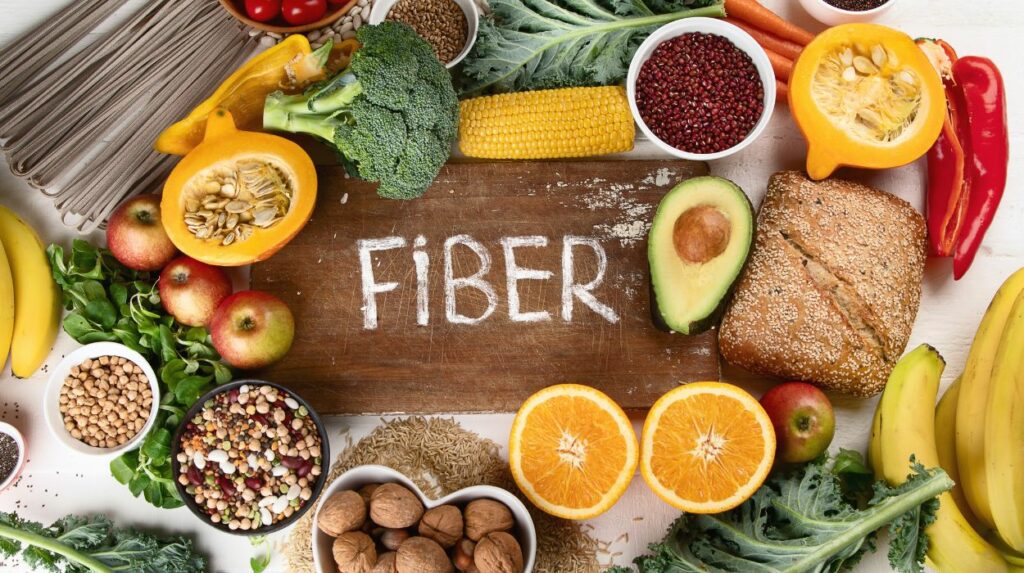
Fiber plays a critical role in weight management. Beyond the age of 50, the digestive system can start to slow down. A diet rich in fiber[19] can help optimize digestion and keep things moving smoothly. Fiber also helps you feel full for longer, reducing your overall calorie intake.
Foods high in soluble fiber, such as oats, flaxseeds, avocados, and legumes, have an added advantage. They can help you lose lower belly fat and prevent belly fat gain because they slow down how fast the stomach releases digested food into the gut.
Fiber-rich foods tend to have a low energy density,[20] providing fewer calories than the same weight as other high-calorie foods. You can eat more food and maintain or reduce your calorie intake by opting for foods like berries, whole grains, and leafy greens.
Find Healthy Sleep Strategies
One of the often overlooked weight management steps is sleep. Since hormonal changes and lifestyle patterns can disrupt sleep cycles over 50, focusing on your sleep quality is crucial. Deep, restorative sleep is essential for metabolism and hormonal balance, both of which play vital roles in fat storage and breakdown.
Consistent sleep deprivation[21] can elevate cortisol levels. Cortisol is a stress hormone directly linked to fat accumulation in the midsection.
Lack of sleep can also increase hunger and sugar cravings,[22] which make dietary discipline challenging. You should establish a consistent bedtime routine to prioritize sleep. Adding practices like reading, meditation, and gentle stretching can signal the body that it’s time to wind down.
You’ll also want to create a sleep-conducive environment. A cool, dark room that’s free of distractions and noise can be helpful. Limiting sleep time at least an hour before bed can also help improve sleep quality. Aim for seven to eight hours[21] of sleep a night. As you focus on finding healthy sleep strategies, you can finally combat that stubborn abdominal fat.
Address Stress Levels
Managing stress is vital as you navigate the changes and challenges of age. Chronic stress leads to elevated cortisol levels,[23] which can trigger visceral fat storage around the stomach. Over the age of 50, this can significantly affect the waistline when hormonal fluctuations are more pronounced.
Stress can also indirectly contribute to weight gain when it influences your food choices. Many people gravitate towards sugary or fatty comfort foods when under stress. While they can provide temporary relief at the moment, these foods are detrimental to your health in the long run.
Consider adopting mindfulness practices like meditation or deep breathing[24] to combat stress. Yoga[24] can be a great way to get your physical activity while practicing relaxation. Staying socially connected through family, friends, or community groups can also help those feeling anxious or isolated.
You’ll also want to recognize and address the sources of your stress. Whether work-related, personal, or health-related, finding healthy coping outlets can improve your mental well-being and promote weight loss.
Keep Portions In Check
Portion control is another excellent strategy to lose weight over 50. Even overeating healthy foods can trigger the body to store fat.[25] It’s important to keep in mind that feeling full shouldn’t be the benchmark for your portions. Instead, it’s best to aim for feeling satisfied but not weighed down.
Using smaller plates or bowls can help regulate portion sizes visually. You should also pay close attention to your body’s hunger cues. Differentiate between physical hunger and emotional cravings. Since hunger is often mistaken for thirst, drink water before eating.
Studies also show[26] that slowing your eating rate can effectively reduce your food intake. It takes about 20 minutes for the brain to register the feeling of fullness. Savoring and thoroughly chewing each bite can give your body ample time to recognize when it’s had enough.
Keeping portions in check helps reduce calorie intake. It also helps create more mindful, intentional eating habits. This aids long-term weight management and overall wellness.
Featured Partner Offer
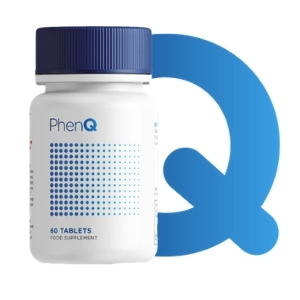
Most Effective Exercises For People Over 50
The body undergoes various physiological changes[7] with aging that affect muscle mass, bone density, and metabolism. Maintaining an active lifestyle becomes crucial for weight management. But it also becomes critical for overall well-being, joint health, and mental acuity.
It might be tempting to revert to exercises from your younger days. However, you’ll need to understand the unique needs of your mature body to prevent injury and optimize results. Exercises explicitly tailored to those in their golden years focus more on strength training, mobility, and balance.
Whether you’ve been an athlete all of your life or are just beginning your fitness journey, finding the proper routine means prioritizing safety and efficacy. Exercises to lose belly fat over 50 for females and males include:
- Walking is gentle on the joints. It can also vary in intensity based on your efforts and fitness level.
- Swimming provides a full-body workout that doesn’t strain the body.
- Cycling can be done outdoors or on a stationary bike. It is an excellent exercise for cardiovascular health.
- Yoga enhances flexibility, balance, and mental well-being.
- Pilates focuses on core strength and is an excellent option for posture and back health.
- Strength training using resistance bands or light weights will help combat age-related muscle loss.
- Tai Chi is known for improving balance and flexibility.
- Low-impact aerobics boosts cardiovascular health without putting strain and stress on your joints.
- Stretching can be incorporated into your daily routine to maintain flexibility and recover after exercise.
- Balance exercise can help prevent falls, which is an issue as mobility changes.
It’s best to consult a doctor before starting any new exercise regimen, especially if you have health concerns. You can also work with a personal trainer or physical therapist to create an exercise routine tailored to your body’s needs.
Summary
Losing weight after 50 goes beyond how you look. It’s important to preserve your health and vitality. While it might seem particularly challenging to shed extra belly fat after 50, proven strategies can help break down stubborn fat.
Remember, it’s never too late to start. Each positive step towards your weight loss goals improves your overall wellness. Consistent efforts to eat healthy, manage stress, get quality sleep, and exercise regularly can help you successfully lose unwanted belly fat. Commit to these guidelines and let the mirror reflect a slimmer, wiser you. Stay golden!
Frequently Asked Questions
Aerobic exercise and strength training combined with a balanced diet rich in fiber and protein is the most effective way to burn belly fat.
Yes, even after 50, you can tighten your stomach. Consistency and patience are key. Focus on combining strength training, cardio exercises, and maintaining a balanced diet.
A mix of regular exercise, a balanced diet, stress management, and healthy sleep habits can reduce menopause belly. Hormone replacement therapy may also be considered under medical guidance.
Avocados, fatty fish like salmon and mackerel, whole grains like quinoa and brown rice, almonds and other nuts, and green tea can help burn belly fat.
Prioritize a balanced diet, strength training, aerobic exercise, stress reduction, and adequate sleep to lose belly fat at 50. Consistent healthy changes are critical to long-term results.
Bodies become more susceptible to injuries[27] during physical activity as we age. Rotator cuff and knee injuries, plantar fasciitis, Achilles tendinitis, strains, and sprains are common.
Resources
- Palmer, A.K. and Jensen, M.D. (2022). Metabolic changes in aging humans: current evidence and therapeutic strategies. Journal of Clinical Investigation, [online] 132(16). doi:https://doi.org/10.1172/jci158451.
- Bray, G.A. and Popkin, B.M. (2013). Calorie-sweetened beverages and fructose: what have we learned 10 years later. Pediatric Obesity, [online] 8(4), pp.242–248. doi:https://doi.org/10.1111/j.2047-6310.2013.00171.x.
- Michelle Van Name, Giannini, C., Santoro, N., Jastreboff, A.M., Kubat, J., Li, F., Romy Kursawe, Savoye, M., Duran, E., Dziura, J., Sinha, R., Sherwin, R.S., Cline, G.W. and Caprio, S. (2015). Blunted suppression of acyl-ghrelin in response to fructose ingestion in obese adolescents: The role of insulin resistance. Obesity, [online] 23(3), pp.653–661. doi:https://doi.org/10.1002/oby.21019.
- Warshaw, H. and Edelman, S.V. (2021). Practical Strategies to Help Reduce Added Sugars Consumption to Support Glycemic and Weight Management Goals. Clinical Diabetes, [online] 39(1), pp.45–56. doi:https://doi.org/10.2337/cd20-0034.
- Soenen, S., Rayner, C.K., Jones, K.L. and Horowitz, M. (2016). The ageing gastrointestinal tract. Current Opinion in Clinical Nutrition and Metabolic Care, [online] 19(1), pp.12–18. doi:https://doi.org/10.1097/mco.0000000000000238.
- Craig, W.J., Ann Reed Mangels, Ujué Fresán, Marsh, K., Miles, F.L., Saunders, A., Haddad, E., Heskey, C., Johnston, P.K., Enette Larson‐Meyer and Orlich, M.J. (2021). The Safe and Effective Use of Plant-Based Diets with Guidelines for Health Professionals. Nutrients, [online] 13(11), pp.4144–4144. doi:https://doi.org/10.3390/nu13114144.
- Wilkinson, D.J., Piasecki, M. and Atherton, P.J. (2018). The age-related loss of skeletal muscle mass and function: Measurement and physiology of muscle fibre atrophy and muscle fibre loss in humans. Ageing Research Reviews, [online] 47, pp.123–132. doi:https://doi.org/10.1016/j.arr.2018.07.005.
- Machado de Sousa, Denis, Elaine Reis Caraça and Cardoso, R. (2019). Dietary protein and exercise for preservation of lean mass and perspectives on type 2 diabetes prevention. Experimental Biology and Medicine, [online] 244(12), pp.992–1004. doi:https://doi.org/10.1177/1535370219861910.
- Moon, J. and Koh, G. (2020). Clinical Evidence and Mechanisms of High-Protein Diet-Induced Weight Loss. Journal of obesity & metabolic syndrome, [online] 29(3), pp.166–173. doi:https://doi.org/10.7570/jomes20028.
- Zhang, H., Tong, T.K.K., Kong, Z., Shi, Q., Liu, Y. and Nie, J. (2020). Exercise training‐induced visceral fat loss in obese women: The role of training intensity and modality. Scandinavian Journal of Medicine & Science in Sports, [online] 31(1), pp.30–43. doi:https://doi.org/10.1111/sms.13803.
- Thyfault, J.P. and Bergouignan, A. (2020). Exercise and metabolic health: beyond skeletal muscle. Diabetologia, [online] 63(8), pp.1464–1474. doi:https://doi.org/10.1007/s00125-020-05177-6.
- Thornton, S.N. (2016). Increased Hydration Can Be Associated with Weight Loss. Frontiers in Nutrition, [online] 3. doi:https://doi.org/10.3389/fnut.2016.00018.
- Guelinckx, I., Tavoularis, G., Jürgen König, Morin, C., Hakam Gharbi and Gandy, J. (2016). Contribution of Water from Food and Fluids to Total Water Intake: Analysis of a French and UK Population Surveys. Nutrients, [online] 8(10), pp.630–630. doi:https://doi.org/10.3390/nu8100630.
- NHS Choices (2023). Water, drinks and hydration. [online] Available at: https://www.nhs.uk/live-well/eat-well/food-guidelines-and-food-labels/water-drinks-nutrition/.
- Vij, V. (2013). Effect of ‘Water Induced Thermogenesis’ on Body Weight, Body Mass Index and Body Composition of Overweight Subjects. Journal of Clinical and Diagnostic Research. [online] doi:https://doi.org/10.7860/jcdr/2013/5862.3344.
- Bhardwaj, B., O’Keefe, E.L. and O’Keefe, J.H. (2016). Death by Carbs: Added Sugars and Refined Carbohydrates Cause Diabetes and Cardiovascular Disease in Asian Indians. Missouri medicine, [online] 113(5), pp.395–400. Available at: https://www.ncbi.nlm.nih.gov/pmc/articles/PMC6139832/.
- Lee, D.-Y., Hwang, W., Murat Artan, Jeong, D. and Lee, S.-J. (2014). Effects of nutritional components on aging. Aging Cell, [online] 14(1), pp.8–16. doi:https://doi.org/10.1111/acel.12277.
- Fajstová, A., Galanová, N., Coufal, Š., J Málková, Kostovčík, M., M Cermáková, Pelantová, H., Kuzma, M., Blanka Šedivá, Tomáš Hudcovic, Tomáš Hrnčíř, Tlaskalová‐Hogenová, H., Miloslav Kverka and Kostovcikova, K. (2020). Diet Rich in Simple Sugars Promotes Pro-Inflammatory Response via Gut Microbiota Alteration and TLR4 Signaling. Cells, [online] 9(12), pp.2701–2701. doi:https://doi.org/10.3390/cells9122701.
- Fu, J., Zheng, Y., Gao, Y. and Wang, X. (2022). Dietary Fiber Intake and Gut Microbiota in Human Health. Microorganisms, [online] 10(12), pp.2507–2507. doi:https://doi.org/10.3390/microorganisms10122507.
- Astrid Kolderup Hervik and Birger Svihus (2019). The Role of Fiber in Energy Balance. Journal of Nutrition and Metabolism, [online] 2019, pp.1–11. doi:https://doi.org/10.1155/2019/4983657.
- Evangelia Papatriantafyllou, Dimitris Efthymiou, Evangelos Zoumbaneas, Codruța Alina Popescu and Εmilia Vassilopoulou (2022). Sleep Deprivation: Effects on Weight Loss and Weight Loss Maintenance. Nutrients, [online] 14(8), pp.1549–1549. doi:https://doi.org/10.3390/nu14081549.
- Naima Covassin, Singh, P., McCrady-Spitzer, S.K., St, E.K., Calvin, A.D., Levine, J.A. and Somers, V.K. (2022). Effects of Experimental Sleep Restriction on Energy Intake, Energy Expenditure, and Visceral Obesity. Journal of the American College of Cardiology, [online] 79(13), pp.1254–1265. doi:https://doi.org/10.1016/j.jacc.2022.01.038.
- van, Savas, M. and Elisabeth (2018). Stress and Obesity: Are There More Susceptible Individuals? Current Obesity Reports, [online] 7(2), pp.193–203. doi:https://doi.org/10.1007/s13679-018-0306-y.
- Pascoe, M. and Thompson, D.R. (2017). Yoga, mindfulness-based stress reduction and stress-related physiological measures: A meta-analysis. Psychoneuroendocrinology, [online] 86, pp.152–168. doi:https://doi.org/10.1016/j.psyneuen.2017.08.008.
- Rolls, B.J. (2014). What is the role of portion control in weight management? International Journal of Obesity, [online] 38(S1), pp.S1–S8. doi:https://doi.org/10.1038/ijo.2014.82.
- Hawton, K., Ferriday, D., Rogers, P.J., Toner, P., Brooks, J., Holly, J.M.P., Kalina Biernacka, Shield, J.P.H. and Hinton, E.C. (2018). Slow Down: Behavioural and Physiological Effects of Reducing Eating Rate. Nutrients, [online] 11(1), pp.50–50. doi:https://doi.org/10.3390/nu11010050.
- Robert, Paterson, D.H., Humphreys, D. and Stathokostas, L. (2013). A 12-month incidence of exercise-related injuries in previously sedentary community-dwelling older adults following an exercise intervention. BMJ Open, [online] 3(6), pp.e002831–e002831. doi:https://doi.org/10.1136/bmjopen-2013-002831.
More from Weight Management
-
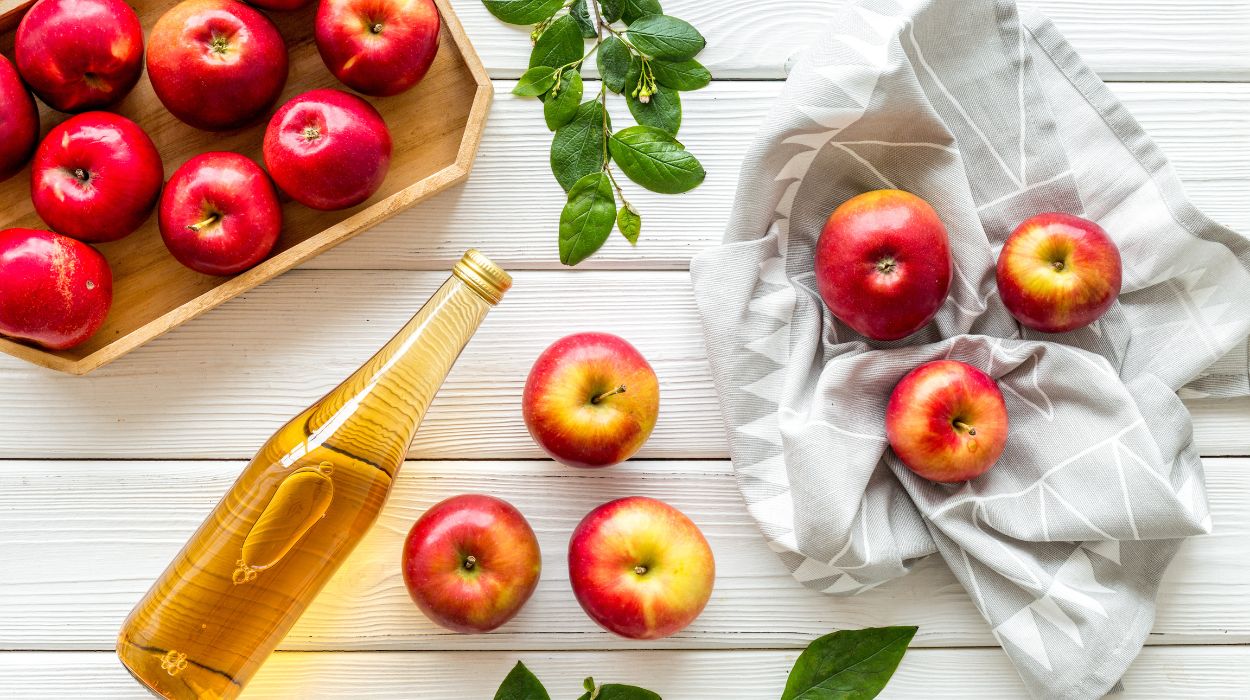
How To Drink Apple Cider Vinegar For Weight Loss In 1 Week In 2024
January 10, 2024
Taking apple cider vinegar has become a sensation for its supposed health benefits, despite its sour taste. Apple cider vinegar may…Read more -

How To Lose Belly Fat After 50: Here’s 10 Tips For People Over 50 To Try In 2024
December 27, 2023
Losing weight over 50 can feel challenging, especially in stubborn areas like the abdomen. As we age, hormonal changes, slower metabolism,…Read more -
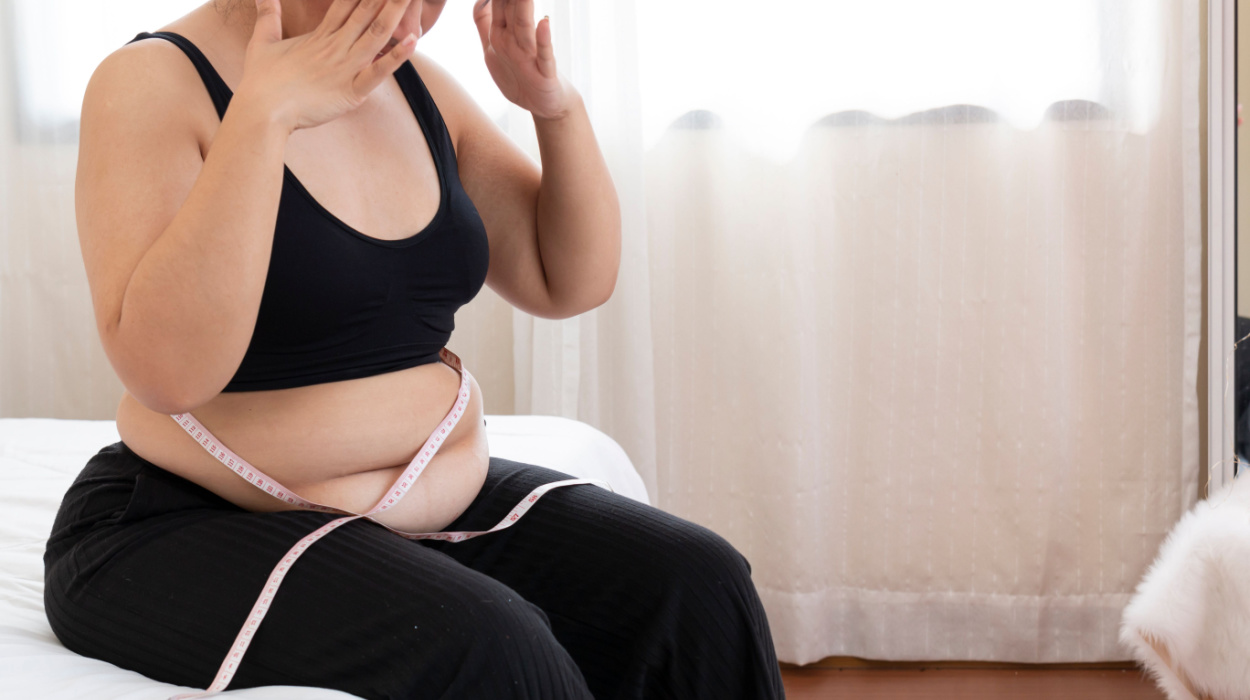
How To Lose Weight With Hypothyroidism – 10 Ways You Should Try In 2024
December 22, 2023
Hypothyroidism[1] is a condition that occurs when a person has low levels of thyroid hormone, and it most often develops when…Read more -

Hypnosis For Weight Loss: Unlocking Your Mind’s Potential For Success 2024
December 20, 2023
You’ve heard about various methods and tools to achieve weight loss and you might have looked into how to get ozempic.…Read more
